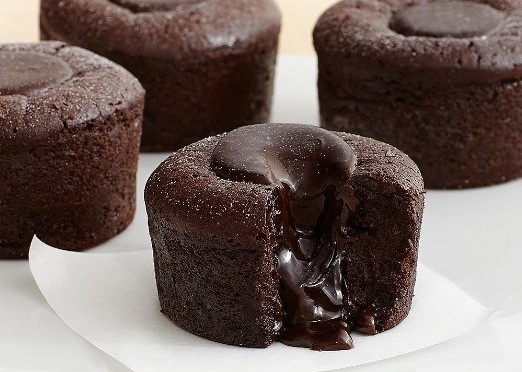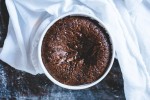 Soufflé’s are normally thought of as French desserts made with chocolate or cheese that rise like the sun from our heavenly oven. But in fact these special delights can be “savory” in nature as well. The method used to make either sweet or savory soufflés is simple when we follow a set of uncompromising rules that will satisfy the most demanding critic at our table.
Soufflé’s are normally thought of as French desserts made with chocolate or cheese that rise like the sun from our heavenly oven. But in fact these special delights can be “savory” in nature as well. The method used to make either sweet or savory soufflés is simple when we follow a set of uncompromising rules that will satisfy the most demanding critic at our table. 
But before we list the guiding principals let’s consider why the soufflé is worth the trouble. First off, they are just so good to eat, albeit rich, but delicious too. And when any food is this good, we must make them as often as possible without the stress and mess that some think is inevitable. One image of a soufflé that relieves this worry is the ever popular popover which is actually a simple bread that rises to beautiful heights of flavor. This experience may then make it even easier to understand why so many food lovers are willing to bear the pressure of preparing a souffle.
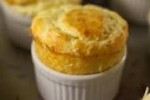 Christmas time gives rise to another version— the famous Yorkshire Pudding popover. This is a soufflé that is eaten with Prime Rib and beef fat or any fat for that matter. Yes! Soufflés are special holiday fare! Of course chocolate or cheese lovers know this intuitively because of their flavor. But for those of us who love vegetables or who may become vegetable lovers, savory soufflés are no less wonderful.
Christmas time gives rise to another version— the famous Yorkshire Pudding popover. This is a soufflé that is eaten with Prime Rib and beef fat or any fat for that matter. Yes! Soufflés are special holiday fare! Of course chocolate or cheese lovers know this intuitively because of their flavor. But for those of us who love vegetables or who may become vegetable lovers, savory soufflés are no less wonderful.
Discovering the David Ayre’s pancake is still another experience that will convert you to feeling attracted to soufflés. It was discovered by the New York Times food critique, Craig Claiborne, who recalled the dish in a 1985 article in the New York Times where he described a holiday brunch given by friends in Hawaii. Claiborne wrote: ‘’ Along about midday I arrived at the mountainside home of the host, David Ayres, the former Editor of Honolulu Magazine…With Diamond Head in the distance, a brilliant, palm-ringed sea below and this delicately flavored pancake before us, we seemed to have achieved paradise.’’
On a personal level I can vouch for the popularity of the David Ayre’s pancake. I have prepared the simple recipe many times for friends and family who now speak in glowing terms of the delicacy. And I can confirm the wonder Claiborne felt when eating what I like to call a “popover pancake.”
And yet the poor soufflé continues to have a mystique of mystery and wonder surrounding it. I think this is primarily because of the fear people have of retrieving a dish from their oven that rises too slowly or not at all, or most terrifyingly after the dish has fallen on its face in their oven. And of course this experience is compounded by guests who are becoming more anxious than need be as they begin to drink their second Vodka Martini or glass of Tuscan Red.
Reading Julia Child’s landmark cookbook while studying the culinary arts was the first time I was formally introduced to the soufflé. Julia made it sound so delectible that i ran home that very day to learn how wonderful the dish tasted when made properly. The rules surrounding the preparation seemed straightforward enough and quite simple as well. I share them with you here and hope you too discover the wonder of the French Soufflé and all its many variations.
Some Helpful Soufflé Tips: Here’s a short list of rules to follow to make successful soufflés that puff up the way you like them to. Most of these rules concern how we treat or mistreat the eggs used in the souffle recipes we wish to make. These tips should create a confidence in you that you too can make soufflés everyone will love again and again.
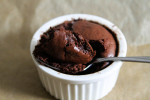 Soufflé Rule #1) Keep the yolks separate from the whites. Fat from egg yolk will prevent egg whites from beating properly. When separating eggs, take care that no yolk gets in the whites. To avoid an accident, separate each egg white into a cup or small bowl before transferring it to the mixer bowl. Discard any white that has even a speck of yolk in it.
Soufflé Rule #1) Keep the yolks separate from the whites. Fat from egg yolk will prevent egg whites from beating properly. When separating eggs, take care that no yolk gets in the whites. To avoid an accident, separate each egg white into a cup or small bowl before transferring it to the mixer bowl. Discard any white that has even a speck of yolk in it.
Soufflé Rule #2) Separate your eggs cleanly when they are refrigerator cold. However egg whites whip to greater volume when they’ve had a chance to warm a bit, 20 to 30 minutes. And “volume” is at the heart of preparing a soufflé that rises sufficiently and so elegantly— sometimes 5-6 inches beyond the top of the dish. This may require you to attach an aluminum collar around the top of the ramekin you are using so the batter doesn’t spill over the sides.Therefore, let the “whites” stand at room temperature to warm up a bit while you prepare the sauce and other ingredients.
Soufflé Rule #3) Gentle folding is the key to maintaining volume. Combining heavier mixtures ( like vegetables or chiles as used in our recipe below) with beaten egg whites can knock the air out of your souffle. To prevent this, begin by pouring the egg yolk mixture over the beaten whites, not vice versa. Then gradually and gently combine the mixtures by folding, rather than stirring.
Julia Child would tell you that if you follow these rules exactly as described you can ’t miss but have guests applauding your soufflé, or your popover, or Yorkshire Pudding, or your David Ayre’s “Popover Pancake” for that matter. In fact, you may even wish to try your hand at creating your own special soufflé. This can be a lot of fun. Bon Appetif.
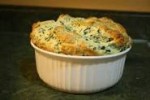 Savory Soufflé with Poblano, Corn & Gruyere Cheese
Savory Soufflé with Poblano, Corn & Gruyere Cheese
(Adapted from Julia Child’s Mastering the Art of French Cooking)
Serves 2-4
2 tbsp Parmesan cheese, grated
1 cup whole milk or heavy cream, heated until boiling
2 ½ tbsp unsalted butter
3 tbsp all-purpose flour
½ tsp sea salt
⅛ tsp cayenne pepper (optional)
Small pinch of nutmeg
½ tsp cream of tartar, lemon juice or vinegar
3 large egg yolks
5 large egg whites
½ cup shredded Gruyere cheese
¼ cup roasted poblano cheese, pureed
¼ cup corn kernals, pureed
1- Preheat the oven to 400ºF.
2- Thoroughly butter the bottom and sides of four 8-ounce ramekins and divide the Parmesan cheese between them, so the souffle can “climb” up the inside of the ramekins with the help of the cheese.
3- Melt the butter in a small saucepan over medium-high heat and whisk in the flour. Continue whisking 2-3 minutes but do not let it brown.
4- Whisk hot milk vigorously into the batter until very thick, about 2-3 minutes. Remove from heat and whisk in the salt, nutmeg, and cayenne (if using). Next whisk in the pureed, roasted poblano and corn into the batter. Set the batter aside.
5- Beat egg whites and cream of tartar in mixer bowl with whisk attachment on high speed until stiff peaks form but are not dry. You are seeking to achieve the point where your egg whites no longer slip when your bowl is tilted.
6- Now you are ready to combine the whites with the batter. Remember to pour the egg yolk mixture over the beaten whites, not the reverse. Next fold in one large spoonful of the egg whites into the batter. Then fold in the Gruyere cheese. Finally, very gently fold in the remaining egg whites into the batter , leaving some small lumps.
7- Divide the mixture between the ramekins, filling them ¾ full. Smooth the tops with a knife.
8- Bake on the bottom rack for 20 minutes. Reduce the temperature to 375 F. Do not open the oven during that time. Bake until golden brown or up to 5 more minutes.
9- The soufflés will begin to deflate or “fall” back a little as you remove them from the oven, so serve immediately. But don’t worry. This “falling back process” is normal.The key is to remember that as French Chefs will tell you, “you are not waiting for your guests but rather your guests are waiting for you and your soufflé when it’s ready”. That way there will still be puffy, beautiful souffles with everyone waiting to eat them.
Contact Chef Alan with questions or comments at www.zoxkitchen.com. Email: azox@zoxkitchen.com

